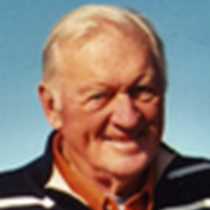Astoria, Oregon
Estuaries challenge sea life, shorelines, and the often puny attempts of humankind to navigate estuary boundaries. The big-shouldered presence of the Columbia River estuary has contributed to centuries of toil and injury to countless vessels and individuals. Unlike the meandering fingers of a big river delta, estuaries roar straight ahead without mercy. Early this morning, with the sunrise emerging, guests caught a glimpse of the Columbia River bar, sometimes referred to as the “Graveyard of the Pacific.” After breakfast, motor coaches headed south, with the great estuary in view.
Approaching Fort Clatsop, the third winter home of the Corps of Discovery, guests saw wild Roosevelt elk. At this time of year, as the Coastal Range cools and higher elevation vegetation becomes sparse, these stunning large animals drift toward the coastal plain. In this case their grazing area was the northern reaches of Clatsop Plain. The Clatsop nation has hunted, roamed and burned this rich bench for thousands of years. As white pioneers moved in, and resident Indians were forced onto federal reserves, the Plain’s rich soil supported generations of Euro-American families – and still does, with the added dimension of beach playgrounds and vacation homes.
Holding mental visions of the Corps and its three-month residence at Fort Clatsop, guests returned to Astoria and the Columbia River Maritime Museum. Again, the river’s estuary was featured among museum displays describing the turbulent bar, a onetime world-class salmon fishery, boat-building, U.S. Coast Guard activity, and an emerging tourist industry.
During the afternoon guests split into two groups: 1) Visiting the Lewis & Clark Interpretive Center at Cape Disappointment (Washington State) – with the Columbia estuary in view; and 2) Touring the charming town of Astoria, including the Astor Column (a monument built to commemorate the trans-continental railroad and the Astor family), and a noisy waterfront colony of California sea lions. The Cape Disappointment contingent saw a small beach called “Waikiki” and one of architect Maya Lin’s Confluence Projects commemorating the Lewis & Clark exploration.
After a rain drop or two upriver, it’s only fair to report that today’s Astoria port-of-call was balmy, sun-filled and clear, a perfect lead-in to the Captain’s Dinner.




